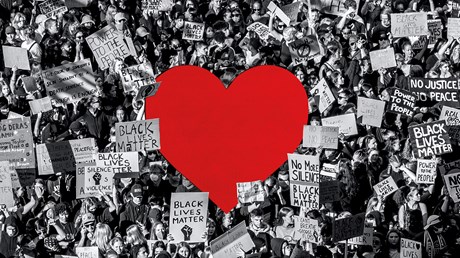The cross calls us to sacrificial community, especially during a divided age.

In the August heat of 1965, widespread violence and bloodshed tore through the Watts area of Los Angeles. There were more than 30 deaths. Most of those were perpetrated by the police. There was fire and looting and vandalism.
At the invitation of Black social groups, civil rights leader Martin Luther King Jr. entered Watts. He later described the protests that followed as “disorganized,” though that was a major oversimplification.
“However, a mere condemnation of violence is empty without understanding the daily violence that our society inflicts upon many of its members,” he said. “The violence of poverty and humiliation hurts as intensely as the violence of the club.”
King wrote about his interaction with a couple of young men in the wake of the weeklong eruption that destroyed many Black businesses that had been the heart of the community.
“We won!” King remembers hearing one exclaim.
He looked at the rubble. The ash. The broken buildings. He tallied the dead bodies.
“What does winning look like?” he asked the youth.
The devastation people are experiencing today is like a wall so high none of us can see the sunlight anymore. Businesses are crumbling. Churches are dividing. A pandemic is raging.
“What does winning look like?” King and those with him asked the youth in Watts. And it is a question we must also ask ourselves today.
Today, America as a country is at war with itself. And we aren’t just at war with people of other races, and we aren’t just at war with Christianity; our divide seems to be a tribalism so strong that it is separating people of the same family and origin.
We are living in a country where Americans feel their political affiliation ...
from Christianity Today Magazine
Umn ministry


.gif)

.gif)
.gif)
